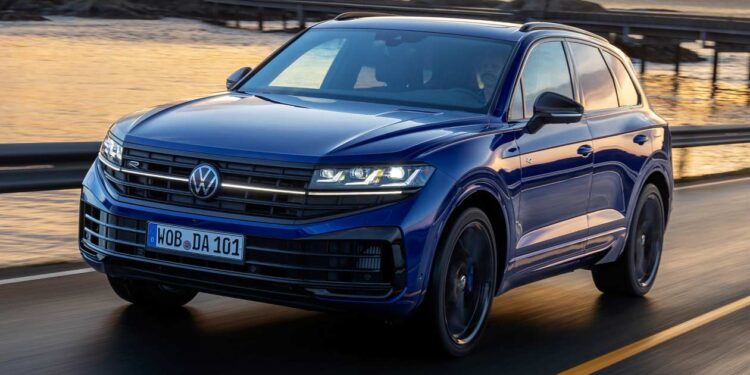The original Touareg was brought to market in 2002 as an ambitious, high-cost SUV designed to rival cars like the BMW X5 and Mercedes GLE (or ML as it was badged at the time). The difference was that the Touareg had genuine off-road ability, with locking differentials and height-adjustable air-suspension.
This ambition spread to powertrains too, as this was the first VW-badged car with a V8 petrol engine, not forgetting the iconic V10 turbodiesel. Volkswagen engineers even managed to cram in a 6.0-litre W12 into the first-generation Touareg’s engine bay for a limited production run.
It also formed the foundation of the Cayenne, a model that in its first two generations was so closely developed with VW that it shared door skins with the Touareg. With no Touareg, there might not have been a Cayenne; Porsche could have looked very different to the company it is today.
So despite selling in relatively small numbers, the Touareg’s position within the VW Group’s premium offering is still central to all the big SUVs built on its MLB-Evo platform. This doesn’t just include the Porsche, but also the Audi Q7 and Q8, Bentley Bentayga and even the Lamborghini Urus – all of which draw their key underpinnings with the VW.
Curiously, in the documentation alongside the Final Edition’s release, Volkswagen said “production of the Touareg combustion engine model is due to end for UK customers in 2027”, suggesting that while the SUV might be put to sleep as we know it, the moniker could be revived some time in the future with an all-electric powertrain.
In order for a new model to be able to carry the Touareg name, though, it doesn’t just need to be big, it also needs to be the technical innovator within the group. We’ll have to wait and see if VW is able to pull off such a feat again.
Get the latest and best car news and reviews, first! Follow Auto Express on Google today


